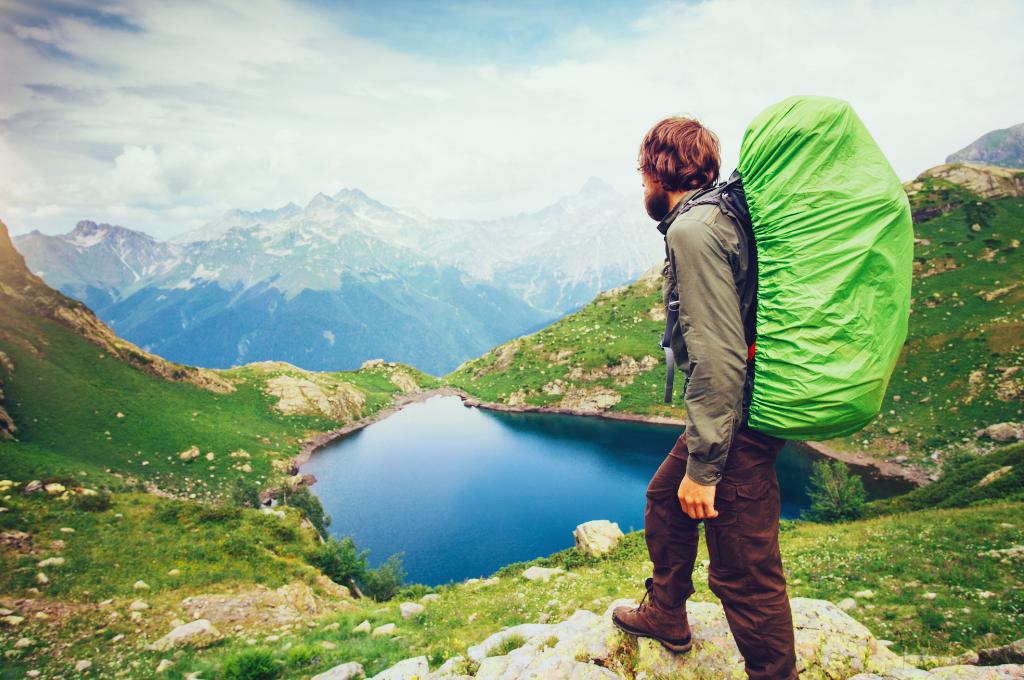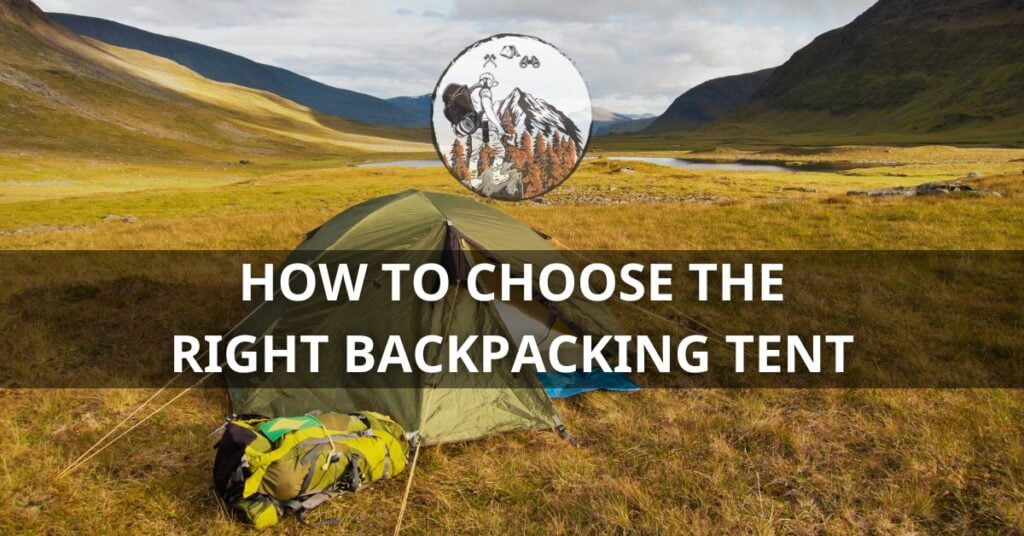Embarking on a wilderness adventure can be a soul-stirring experience, thrusting you out of your comfort zone and into the heart of the unknown. Backpacking, with its promise of uncharted trails and untouched landscapes, beckons the intrepid traveler.
But what if you want to answer the call of the wild without breaking the bank? This is where the art of budget wilderness backpacking comes into play, a skillful approach that combines resourcefulness with the spirit of exploration.
In this extensive guide, we’ll delve into the nitty-gritty of backpacking on a budget, equipping you with strategies to chase horizons without draining your savings. Whether you’re a seasoned trekker looking to cut back on expenses or a newcomer drawn to the majestic allure of the great outdoors, these insights will pave the way to an affordable and fulfilling backpacking journey
Table of Contents

Introduction to Wilderness Backpacking
Definition and Appeal
Wilderness backpacking is the act of hiking and camping in the outdoors, typically in remote areas where the presence of man is minimal. Unlike traditional camping, where you pitch your tent next to your car, backpacking immerses you in the very fabric of nature, carrying all your essentials on your back.
The allure lies in the solitude, the challenge, and the connection to the natural world that can only be found through self-sufficient exploration.
Benefits of Backpacking on a Budget
Enjoying the wilderness shouldn’t be a privilege reserved for the affluent. Embracing the frugal approach to backpacking ensures that these experiences are accessible to all. A thrifty trek can foster a deeper appreciation for the resources we have, promote creativity, and result in a more authentic, less touristy adventure.
Planning Your Budget Backpacking Adventure
Setting Financial Goals
Before you lace up your boots, it’s vital to define your budget. Establish a clear range of how much you’re willing to spend on different aspects of your trip, from gear to food and transportation. Be flexible, but having a basic outline will keep your spending in check.
Understanding Costs and Expenses
Deconstruct the anticipated expenses of your journey. Costs can include gear purchases or rentals, permits, travel insurance, park fees, and emergency funds. Once you have a detailed breakdown of expenses, undertaking adjustments will be more manageable.
Budgeting Tools and Resources
Leverage tools like budgeting apps or online calculators to keep track of your spending. Websites that compare prices for gear and services can be a treasure trove of savings. Remember, every penny you save counts toward enriching your future adventures.
Essential Gear for Budget Backpacking
Choosing Budget-Friendly Gear
Investing in durable, budget-friendly gear can be a smart long-term saving. Look for sales, second-hand shops, and closeout deals. Prioritize quality over quantity; owning fewer, better items can be more economical in the long run.
Multi-Use Gear Options
Versatile equipment can serve more than one purpose, saving both space and money. For instance, a multi-tool with a knife, scissors, and can opener can replace multiple items in your pack.
DIY Gear Solutions
Don’t shy away from your inner MacGyver. There are numerous ways to fashion your own ultralight and affordable outdoor gear. Crafting your cookware or shelter can not only cut costs but also add a personalized touch to your adventure.
Meal Planning and Food Strategies
Cost-Effective Meal Ideas
Think beyond freeze-dried meals. Staple items like instant noodles, oatmeal, and couscous are lightweight, inexpensive, and quick to prepare. Incorporating dry goods into your diet can provide essential sustenance without hefty price tags.
Food Preparation Tips for the Trail
Opt for preparation methods that save on fuel and time, such as soaking couscous in cold water. This drastically reduces the need for prolonged cooking over a stove costly in terms of both energy and time.
Resupplying on a Budget
Strategically planning your resupplies can prevent over-purchasing and reduce costs. Take advantage of supermarket sales and bulk buys in towns near your trail to refuel your pantry.

Finding Affordable Trails and Campsites
Researching Free and Low-Cost Trail Options
The world is your oyster with numerous free and low-cost trail options. From national forests to community trails, a little research can unearth paths that promise the same awe-inspiring vistas without the premium price tag.
Utilizing Public Lands and Wilderness Areas
Public lands offer the twin benefits of accessible beauty and minimal cost. Take advantage of national parks and forests, paying attention to their free entry days or obtaining annual passes to visit a plethora of wonders across the country.
Camping Strategies for Saving Money
Make the most of free backcountry camping spots, but remember to follow the guidelines set by each area. Stack your rest days with free campgrounds, or alternately, consider stealth camping where allowed and respectful of both nature and local laws.
Transportation Hacks for Budget Backpackers
Economical Transportation Options
Opt for the most budget-friendly means of traveling to the trailhead. This might involve public transportation, which is often cheaper than private options and saves the environment’s wear and tear.
Carpooling and Shuttle Services
If you must use a car, reduce gas expenses by carpooling with fellow backpackers or utilizing shuttle services that cater to popular trailheads. Social media platforms can be effective in connecting with potential ride-sharers.
Minimizing Travel Costs
Analyze your travel strategy to minimize costs. Plan to trek loops that start and end at the same point to avoid pricey one-way trips. In other instances, the cheapest route may be to invest in good hiking shoes and travel on foot from your doorstep.
Safety Considerations on a Budget
Importance of Safety Gear
While cutting costs, never compromise on safety gear. An investment in quality items like a reliable first-aid kit or a weather-appropriate emergency blanket should be non-negotiable.
First Aid on a Budget
Assemble your first-aid kit from existing household items and cheap drugstore finds. Prioritize frequently needed items and learn how to use them effectively.
Emergency Preparedness Strategies
Craft a thorough emergency plan and share it. Inform friends or family of your itinerary and expected return, and know the contingencies in case something goes awry. This preparatory work will save you from both emotional and financial distress down the trail.
Environmental Responsibility While Backpacking on a Budget
Leave No Trace Principles
Maintain the highest ethical standards by adhering to ‘Leave No Trace’ principles. This conserves the environment and could save you from fines found in some protected areas for breaches.
Sustainable Gear Choices
Prioritize gear that minimizes its ecological footprint. Reusable items and gear made from sustainable materials can not only be cost-effective but also environmentally friendly.
Supporting Conservation Efforts
Even on a tight budget, there are ways to support conservation. Volunteer with trail maintenance crews or donate funds to organizations that protect the environment. Your contribution can make a difference, and it’s often tax deductible.
Maximizing Enjoyment on a Budget Backpacking Trip
Budget-Friendly Activities and Side Trips
Scope out free or low-cost activities along your route. Swimming holes, stargazing, or visiting historical sites can provide breaks from hiking without busting your budget.
Mindful Spending Tips
Be strategic with your purchases. Pack lunches and brew your coffee instead of resorting to costly convenience stores. Being conscious of your spending will leave you with more resources for future excursions.
Finding Free Entertainment in Nature
Engage with the natural entertainment around you, from bird watching to identifying flora and fauna. Nature is the ultimate provider of free, endless entertainment.
Budget Backpacking for Families and Groups
Group Gear Sharing Strategies
For families or larger groups, consider sharing gear to reduce individual costs. Items like stoves, tents, and cookware can be community property rather than individually owned.
Family-Friendly Budgeting Tips
Tailor your financial strategy to fit the specific needs of your family. Bulk buying may work for some items while small, tailored purchases may be the best approach for others.
Planning Budget-Friendly Group Trips
Coordination is key for group trips. Plan well in advance to benefit from group discounts and ensure everyone is on the same page regarding expenses and responsibilities.
Personal Hygiene and Comfort on the Trail
Low-Cost Hygiene Solutions
Personal hygiene is important but need not be costly. Invest in biodegradable soap or consider alternatives like wet wipes to stay clean without damaging the environment.
Maintaining Comfort on a Budget
Seek comfort in the little things. A favorite snack or a well-chosen comfort gear can provide emotional support without a substantial financial investment.
Dealing with Weather Challenges
Prepare for weather challenges by choosing the right gear. Prioritize waterproof and windproof options even if it seems cheaper to skimp. Being adequately prepared will prevent more significant financial and health-related setbacks in the future.
Mental Preparedness for Budget Backpacking
Coping with Limited Resources
The key to enjoying a budget backpacking trip is a good attitude. Embrace the challenge with a positive mindset, knowing that each obstacle overcome makes the journey that much more rewarding.
Embracing the Simplicity of Nature
Take solace in nature’s simplicity. At its core, budget backpacking is about stripping away unnecessary layers to revel in the profound beauty of the wilderness — an experience that money can’t buy.
Mental Health Resources for Backpackers
Explore mental health resources available on- and off-trail. Techniques like mindfulness and grounding can offer free solace, complementing the backdrop of nature’s calming influence.
Fitness and Training for Budget Backpacking
Preparing Physically on a Budget
Begin your physical preparation well in advance to avoid costly injuries that might postpone or derail your trip. Tailor a workout regimen to strengthen the specific muscles you’ll use while hiking.
Injury Prevention Tips
Invest time in understanding and preventing common injuries. This could save you healthcare costs and potential financial stress down the line.
Training Without Expensive Equipment
You don’t need cutting-edge fitness equipment to train effectively. Bodyweight exercises, running, and even daily hikes can enhance your endurance and strength without adding to your expenses.
In Conclusion: The Rich Rewards of Thrifty Travel
Backpacking on a budget is not just about financial conservation; it’s about crafting a travel experience that’s rich in authenticity and adventure. It invites us to strip away the excess and focus on what truly enriches our journeys: the people we meet, the places we discover, and the personal growth that accompanies every step taken and mile covered.
As your journey unfolds, remember that while embracing frugality is key, so is flexibility. The best experiences often come unbidden and unticketed, so be prepared to ditch the roadmap from time to time.
Stay committed to your budget, but leave room for the unexpected — sometimes the greatest treasures are found off the ledger. So, arm yourself with wits, gear, and a spirit of fortitude, and set out to explore the world without fear for your wallet or your wanderlust.
Happy trails, thrifty travelers! Your adventures await.
FAQs
What are some common misconceptions about budget backpacking?
The most common misconception is that budget backpacking must equate to uncomfortable or dangerous conditions. With careful planning and resourcefulness, a budget trek can be just as safe and enjoyable as an expensive one, if not more so.
How can I ensure I have enough money for emergencies while backpacking on a budget?
Diligent planning is essential. Consider every potential emergency and allocate a portion of your budget specifically to your emergency fund. This might mean sacrificing certain luxuries in favor of peace of mind, but it’s a trade-off that any prudent backpacker should be willing to make.
How can I plan a budget backpacking adventure?
Plan by setting clear financial goals, understanding expenses, leveraging budgeting tools, and prioritizing quality, multi-use, and DIY gear options.
What are some cost-effective meal ideas for budget backpacking?
Opt for lightweight, inexpensive staples like instant noodles, oatmeal, and couscous. Utilize preparation methods that save fuel and time, and strategically plan resupplies.
Are there any tips for maintaining safety while budget backpacking?
Prioritize safety gear and first aid, assembling a kit from affordable items. Craft an emergency plan, share your itinerary, and adhere to ‘Leave No Trace’ principles to ensure environmental responsibility and minimize risks.



